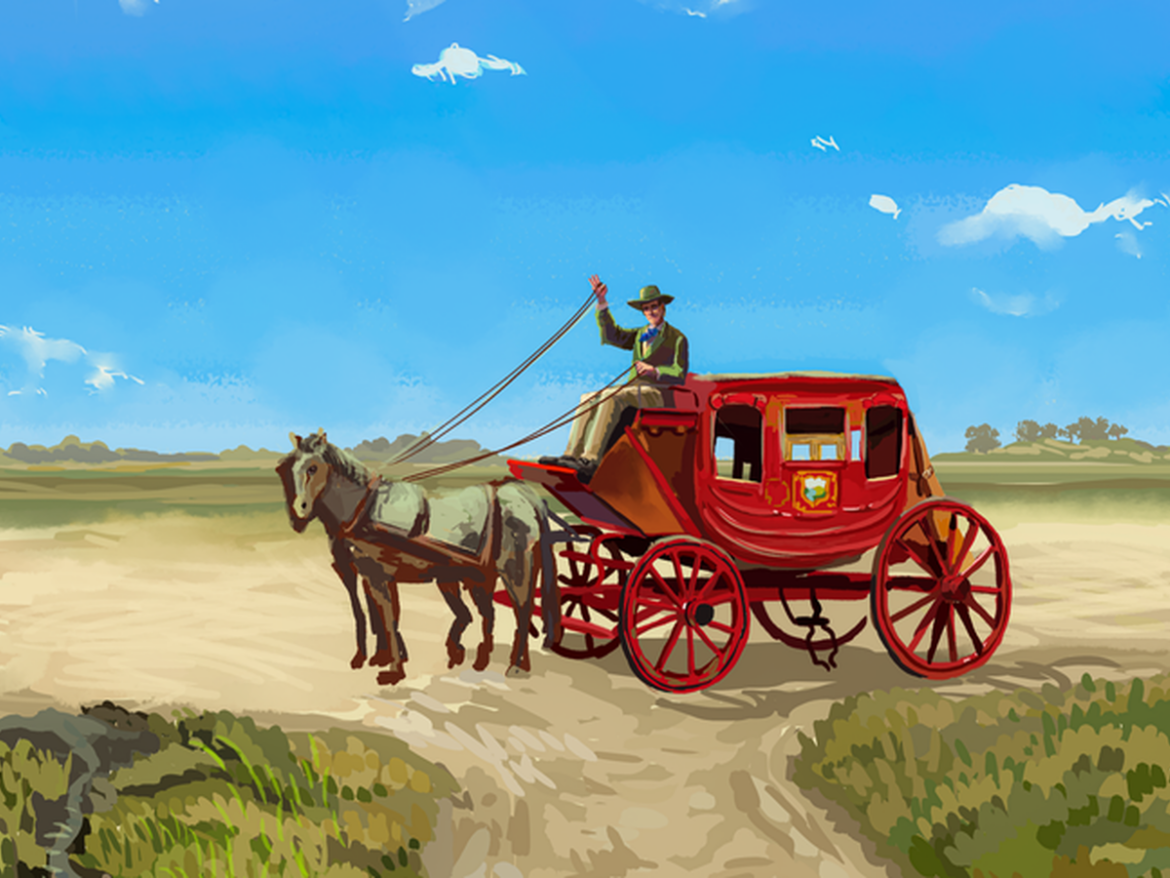On Dec. 18, 1879, a short, stocky rancher named Charley Parkhurst lay dying in his two-room cabin in Santa Cruz County, Calif. Several times he beckoned a friend to his side. Charley seemed to want to tell him something, but he didn’t.
After his death, Charley’s friends made an astonishing discovery: Charley was really Charlotte, and she’d had a baby.
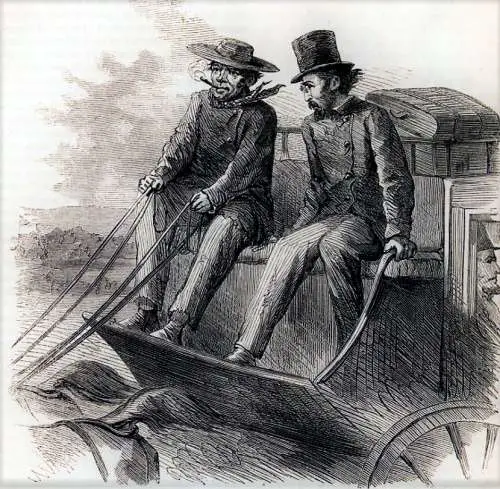
Charley Parkhurst and J. Ross Browne in an illustration by Browne for Harper’s magazine
But that wasn’t the astonishing part. Women dressing as men was not all that unusual in the Old West, a place where people came to reinvent themselves. The amazing part was that Charley — or Charlotte — had been a legendary stagecoach driver in gold rush country. To be a stagecoach whip required nerve, courage, coolness, endurance and skill, qualities not associated back then with the fairer sex.
The news that Charley was Charlotte made news around the country.
Charley Parkhurst
Charley had arrived by steamer in San Francisco in 1851, nearly 40 and aiming to be “the best damn driver in California.”
Charley stood five feet tall and had only one good eye after a horse kicked him. He dressed in tailored coats, handmade boots and a broad gray hat. No matter the weather he wore long-fringed, beaded gloves – perhaps to hide small women’s hands. He drank whiskey, chewed tobacco, smoked cigars and talked to his horses. His profane vocabulary sometimes left his passengers spellbound.
At first he drove from Sacramento to the rough mining towns around Sutter’s mill, the gold region known as the Mother Lode. When the roads opened to Virginia City and the Nevada mining towns, Charley drove those. He drove over the big hump of Mount Madonna, in and out of the Central Valley and down to San Francisco. She drove special missions for Wells Fargo, and in his later years drove between San Juan and Santa Cruz. People called Charley “boss of the road.”

Mount Madonna
His proudest accomplishment: never capsizing a stage or injuring a passenger.
Ed Sams in his book, The Real Mountain Charley, wrote that it took a special person to drive a stagecoach during the gold rush. “Only a rare breed of men could be depended upon to ignore the gold fever of the 1850s and hold down a steady job of grueling travel over narrow one-way dirt roads that swerved around mountain curves, plummeting into deep canyons and often forded swollen, icy streams,” he wrote.
Drivers, or “whips,” also faced highwaymen who ordered them to throw down the wooden box that carried payroll or gold.
One-Eyed Charley Parkhurst
Charley was adept with the whip and the pistol as well as the reins of a Concord coach. He shot at least two bandits, and he could cut the cigar from a man’s mouth at 15 paces without touching him.
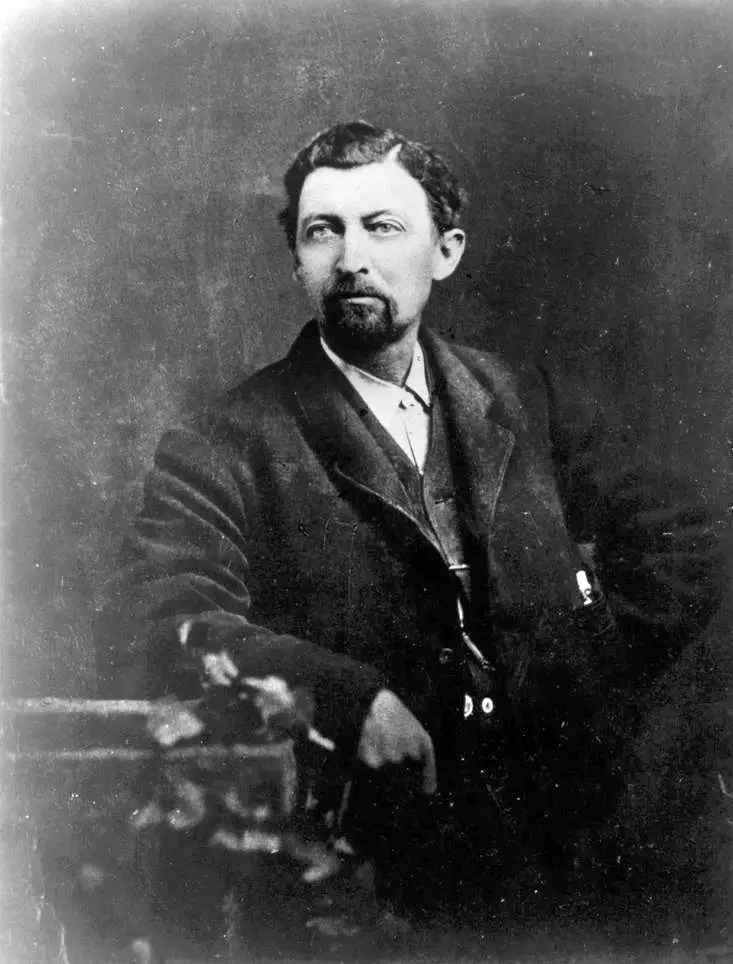
Hank Monk
“He was in his day one of the most dexterous and celebrated of the famous California drivers, ranking with Foss, Hank Monk, and George Gordon,” wrote the New York Times on Jan. 9, 1880 (reprinted from the San Francisco Call), shortly after his death. “It was an honor to sit in the spare end of the driver’s seat when the fearless Charley Parkhurst held the reins of a four or six in hand.”
Clients got into the habit of asking for One-Eyed Charley.
Charley Parkhurst, New England Girl
She was born in 1812 in Sharon, Vt., to Mary (Morehouse) Parkhurst and Ebenezer Parkhurst as Charlotte Darkey (or Durkee) Parkhurst. Her mother died the year of her birth. She had an older brother, Charles D., and a sister, Maria. After her brother died in 1813, Charlotte and Maria went to an orphanage in Lebanon, N.H.
The Providence Journal, just after her death, reported, “While in the poor house he discovered that boys have a great advantage over girls in the battle of life, and he desired to become a boy.”
At the age of 12 she dressed in boys’ clothes and ran away from the orphanage. She ended up in Worcester and got a job in Ebenezer Balch’s livery stables. She cleaned stalls, washed carriages and scrubbed floors. “Charley” had an aptitude for horses, and Balch taught her how to handle them.
She watched the Concord coaches that came and went, and she learned how to doctor the horses that she understood so well.

This Concord Coach ran from Charlestown, N.H., to Springfield, Vt.
Providence
Balch then bought the Franklin House and the What Cheer stables in Providence. Charley followed him. Still young, he drove stage routes along the Boston Post Road to Boston, Providence, Worcester and New York.
He earned a reputation as a skillful hostler handling teams of two to six horses – her favorite, a team of six matched grays.
Once, in Patuxet, he waited outside for passengers at a dance and his hands froze. Ever afterward, Charley wore his signature gloves.
Charley also drove coaches in Georgia, though it isn’t clear whether he moved there or not.
In 1837, the city directory listed Charles D. Parkhurst, hostler, living at “College, corner of Pine and Dorrance” in Providence. Then at 77 North Main, then Central and finally Weybosset streets.
In 1854-55, the Providence directory listed Charles D. Parkhurst, coachman, at Dorrance Street. But the directory got it wrong. Charley lived in California by then.
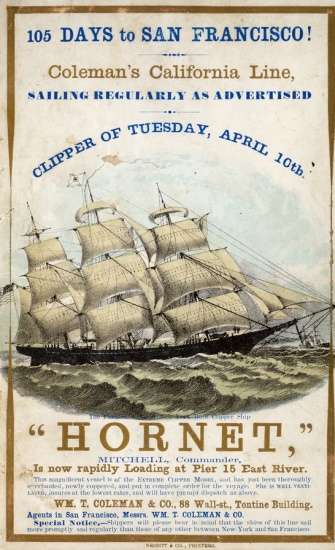
Westward, Ho!
After two decades of driving in New England, Charley boarded the steamer R.B. Forbes, bound for South America. On board, Charley chatted with his fellow passengers. A San Francisco businessman named John Morton called Charley “an agreeable ‘companion de voyage’.” He told Morton he planned to drive a stage, and Morton, who ran a drayage company, offered Charley a job.
Another fellow passenger may have left a clue to the missing pages of Charley’s story.
While traveling overland in Nicaragua, John Charles Duchow, on May 18 mentioned in his journal a passenger who called himself “Charles Clifton.”
“[P]assengers on board call him ‘Thunderbolt’,” wrote Duchow. “He says the reason for passing under an assumed name was that he was an important witness in a case and wishing to have nothing to do with it, adopted a false name to get out of the way. He told us that he’s married to a Boston merchant where he is keeper of the American’s house…In short, he is a very queer fellow indeed!”
Was “Clifton” really Charley Parkhurst? The San Francisco Call left a further clue shortly after Charley died. A young woman in New Hampshire had been disappointed in love and left her native state “disguised in the habiliments of the sterner sex,” the newspaper reported.
California
Jim Birch, whose mansion still stands in Swansea, Mass., had arrived in California at 21 during the gold rush to seek his fortune. He had worked in a Providence livery stable, where he probably met Charley. In California, he hired him.
Birch started his California Stage Company in Sacramento, the supply center for the gold rush belt known as the Mother Lode. Thousands of prospectors left the town every day in search of riches. Birch started out charging them two ounces of gold for a one-way trip between Sacramento and the foothills of the Sierra Nevadas.
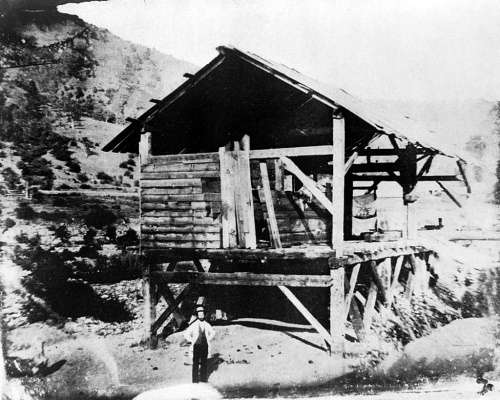
Sutter’s Mill, where the gold rush started
Charley often faced down danger on the job. Once, a highwayman, perhaps nicknamed Sugarfoot, held up Charley’s stage on the road from Stockton to Mariposa. He made off with $100,000 in gold dust. Charley vowed revenge.
Later, on that same road, a band of highwaymen jumped out and seized Charley’s horses. Charley pulled on his reins and called to his horses, who flew through the bandits. Charley then aimed his pistol at the bandit — Sugarfoot — and fired. Sugarfoot, according to the newspaper report, crawled into a miner’s cabin and gave up his sinful ghost.
Later, Charley was urging his horses through mudholes in a Grass Valley creek bed and a highway robber ordered him to put up his hands. Charley cracked his whip across the robber’s eyes, blinding him in one of them.
An Eyewitness
J. Ross Browne, a writer and illustrator of tales of the old West, rode once with Charley from Placerville to Virginia City.
“I was proud and happy to sit by the side of Charlie — especially as the road over which we passed after dark, branches off over hills, and along the sides of hills, and into deep canyons, and up hills again; dark, dismal places in the midst of great forests of pine, where the horses seem to be eternally plunging over precipices and the stage followed them with a crashing noise, horribly suggestive of cracked skulls and broken bones.”
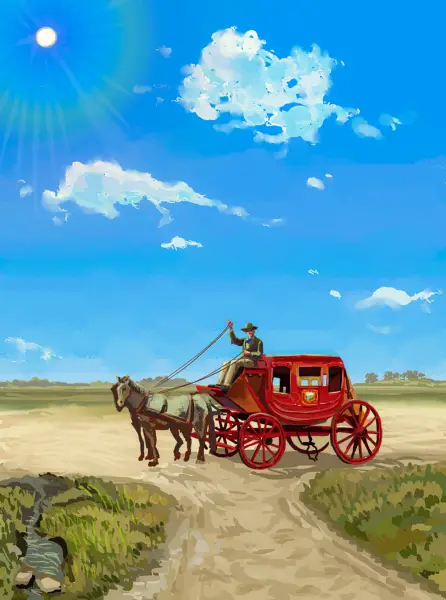
However, he wrote, he had confidence in the old driver. “The way he handled the reins and ppered through the clouds of dust and volumes of darkness, and saw trees and sumps and boulders of rock, and horses’ ears, when I could scarcely see my own hand, was a miracle of stage driving.”
Browne reported that Charley was thinking of retirement.
“I’m no better now than when I commenced. Pay’s small and work’s heavy. I’m getting old. Rheumatism in my bones — nobody to look out for old, used-up stage drivers. I’ll kick the bucket one of these days and that’ll be the last of old Charley.”
Retirement
At least once in the 1860s Charley risked exposure while working for a man named Andy Jackson Clark, according to Sams. Charley came home drunk and Mrs. Clark told her 17-year-old son to put Charley to bed. The boy put Charley to bed and then ran back to his mother. “Maw, Charley ain’t no man, he’s a woman!”
They never told anyone until after he died.
Charley decided during the Civil War to retire to farm life, according to the Santa Cruz Sentinel.
For a while he ran a stage stop on the Santa Cruz to Los Gatos road. He then bought a little spread somewhere between Soquel and Watsonville. Charley built a two-room cabin and planted an apple orchard. In winters he hired out as a lumberjack. Charley joined the local Odd Fellows and registered to vote.
In his will, he left money (either $900 or $4,000) to George Harmon, the 16-year-old son of a neighbor (Sams) because he’d been nice to him.
After she died a little red trunk filled with baby clothes was found in her cabin.
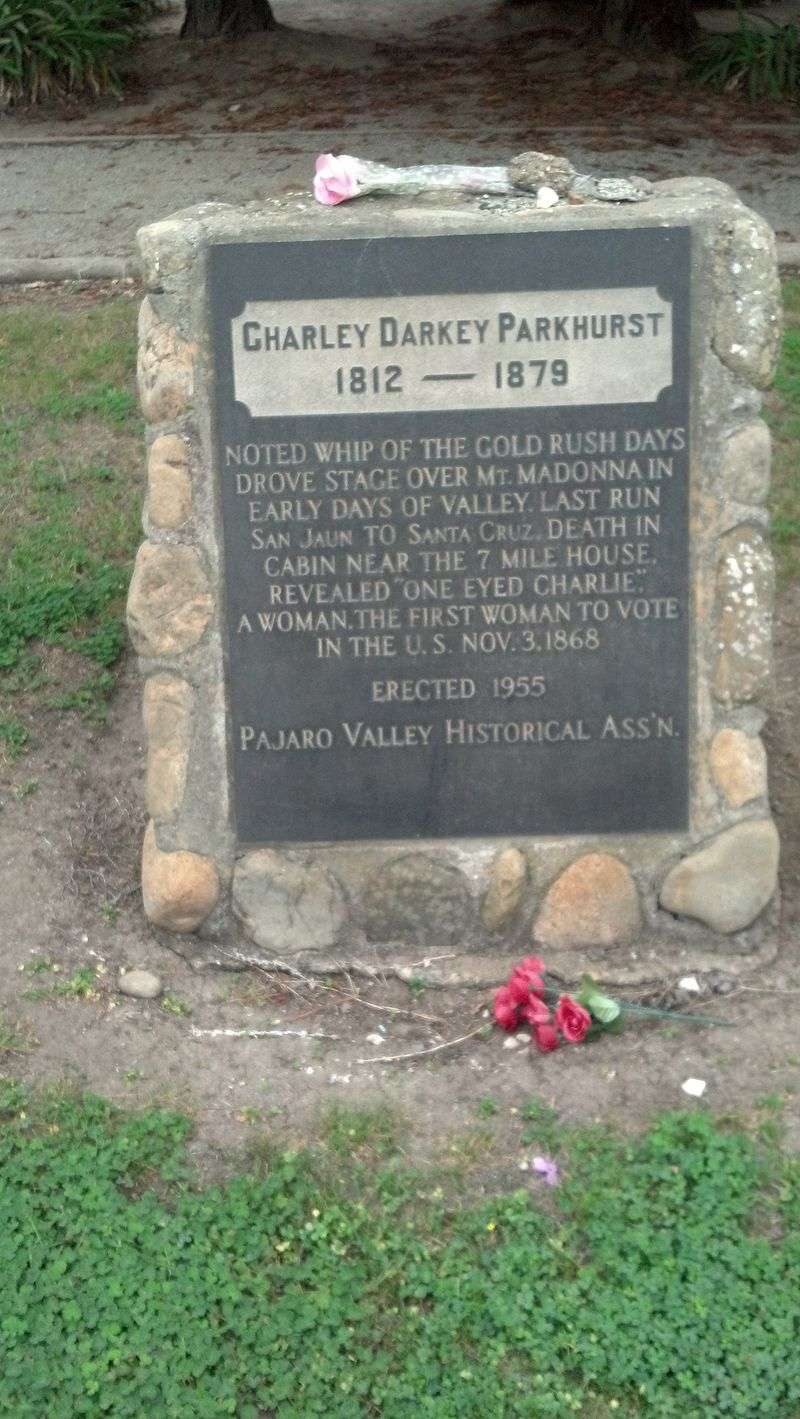
Parkhurst’s headstone at the Pioneer Cemetery in Watsonville
Lots of Charley Parkhursts
in 1859, newspaper editor Horace Greeley took a trip west. He met a young clerk who’d had enough of gold hunting and intended to return home to his parents in Indiana. The next day, his conductor told him the clerk was a woman.
After the Civil War, three separate women in Colorado and Wyoming wore men’s clothes and called themselves Mountain Charley.
Harry Allen, born female, was a petty criminal in the Pacific Northwest who refused to wear women’s clothes. A lumberjack named Sammy Allen died at the age of 80 in Montana, and, like Charley Parkhurst, was discovered to have been a woman.
Historian Peter Boeg was researching the gay West for a book and was shocked to hear hundreds of stories about people who cross dressed.
“They saw the West as a place where they could live and get jobs and carry on a life that they couldn’t have in the more congested East,” he concluded.
Shortly after Charley Parkhurst died, the San Francisco Call reported on her death.
“The discoveries of the successful concealment for protracted periods of the female sex under the disguise of the masculine are not infrequent,” reported the newspaper. “But the case of Charley Parkhurst may fairly claim to rank as by all odds the most astonishing of all of them.”
Images: Painting of Charley’s stagecoach By Avital Shtapura – Own work, CC BY-SA 4.0, https://commons.wikimedia.org/w/index.php?curid=110092075. Charley Parkhurst and J. Ross Brown from “Washoe Revisited,” 1865, Harper’s Monthly. Mount Madonna By Wahn – Own work, CC BY-SA 4.0, https://commons.wikimedia.org/w/index.php?curid=69836978. Hank Monk By http://www.visitcarsoncity.com/history/people/hank_monk.php, PD-US, https://en.wikipedia.org/w/index.php?curid=14924459. Charley Parkhurst’s headstone By Wikicuda – Own work, CC BY-SA 4.0, https://commons.wikimedia.org/w/index.php?curid=48349758. This story last updated in 2024.
